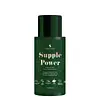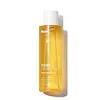What's inside
What's inside
 Key Ingredients
Key Ingredients

 Benefits
Benefits

 Concerns
Concerns

 Ingredients Side-by-side
Ingredients Side-by-side

Onsen-Sui
Water
Skin ConditioningNiacinamide
SmoothingButylene Glycol
Humectant1,2-Hexanediol
Skin ConditioningDipropylene Glycol
HumectantChondrus Crispus Extract
Skin ConditioningCaprylyl Glycol
EmollientSaccharum Officinarum Extract
MoisturisingBetaine
HumectantSodium Citrate
BufferingPropanediol
SolventPolyglyceryl-10 Laurate
Skin ConditioningSodium Hyaluronate
HumectantCitric Acid
BufferingAdenosine
Skin ConditioningAllantoin
Skin ConditioningHyaluronic Acid
HumectantPlumeria Alba Flower Oil
Ethylhexylglycerin
Skin ConditioningHydrolyzed Hyaluronic Acid
HumectantHydroxypropyltrimonium Hyaluronate
Hydrolyzed Sodium Hyaluronate
Skin ConditioningSodium Acetylated Hyaluronate
HumectantCaffeine
Skin ConditioningPotassium Hyaluronate
Skin ConditioningTocopherol
AntioxidantDimethylsilanol Hyaluronate
HumectantSodium Benzoate
MaskingOnsen-Sui, Water, Niacinamide, Butylene Glycol, 1,2-Hexanediol, Dipropylene Glycol, Chondrus Crispus Extract, Caprylyl Glycol, Saccharum Officinarum Extract, Betaine, Sodium Citrate, Propanediol, Polyglyceryl-10 Laurate, Sodium Hyaluronate, Citric Acid, Adenosine, Allantoin, Hyaluronic Acid, Plumeria Alba Flower Oil, Ethylhexylglycerin, Hydrolyzed Hyaluronic Acid, Hydroxypropyltrimonium Hyaluronate, Hydrolyzed Sodium Hyaluronate, Sodium Acetylated Hyaluronate, Caffeine, Potassium Hyaluronate, Tocopherol, Dimethylsilanol Hyaluronate, Sodium Benzoate
Water
Skin ConditioningButylene Glycol
HumectantDipropylene Glycol
HumectantGlycerin
Humectant1,2-Hexanediol
Skin ConditioningCaprylic/Capric Triglyceride
MaskingBetaine
HumectantCamellia Sinensis Leaf Water
MaskingHamamelis Virginiana Extract
AntiseborrhoeicZinc PCA
HumectantSalix Alba Bark Extract
AstringentSodium Hyaluronate
HumectantHydrolyzed Hyaluronic Acid
HumectantHydrolyzed Sodium Hyaluronate
Skin ConditioningHyaluronic Acid
HumectantHydroxypropyltrimonium Hyaluronate
Potassium Hyaluronate
Skin ConditioningSodium Hyaluronate Crosspolymer
HumectantSodium Acetylated Hyaluronate
HumectantTremella Fuciformis Polysaccharide
Emulsion StabilisingCitrus Junos Fruit Extract
Skin ConditioningAnanas Sativus Fruit Extract
Skin ConditioningSalvia Officinalis Leaf Extract
CleansingMandelic Acid
AntimicrobialGlycolic Acid
BufferingTocopherol
AntioxidantMoringa Oleifera Seed Oil
EmollientMelia Azadirachta Leaf Extract
Skin ConditioningGalactomyces Ferment Filtrate
HumectantPseudoalteromonas Ferment Extract
HumectantBifida Ferment Lysate
Skin ConditioningEclipta Prostrata Extract
Skin ConditioningC12-14 Pareth-12
EmulsifyingGelatin
Tromethamine
BufferingAcrylates/C10-30 Alkyl Acrylate Crosspolymer
Emulsion StabilisingAllantoin
Skin ConditioningTrehalose
HumectantPentylene Glycol
Skin ConditioningAgar
MaskingCyamopsis Tetragonoloba Gum
Emulsion StabilisingAcacia Senegal Gum
MaskingTetrasodium Iminodisuccinate
Biosaccharide Gum-1
HumectantCellulose Gum
Emulsion StabilisingCarbomer
Emulsion StabilisingUbiquinone
AntioxidantXanthan Gum
EmulsifyingXanthophylls
Skin ConditioningEthylhexylglycerin
Skin ConditioningWater, Butylene Glycol, Dipropylene Glycol, Glycerin, 1,2-Hexanediol, Caprylic/Capric Triglyceride, Betaine, Camellia Sinensis Leaf Water, Hamamelis Virginiana Extract, Zinc PCA, Salix Alba Bark Extract, Sodium Hyaluronate, Hydrolyzed Hyaluronic Acid, Hydrolyzed Sodium Hyaluronate, Hyaluronic Acid, Hydroxypropyltrimonium Hyaluronate, Potassium Hyaluronate, Sodium Hyaluronate Crosspolymer, Sodium Acetylated Hyaluronate, Tremella Fuciformis Polysaccharide, Citrus Junos Fruit Extract, Ananas Sativus Fruit Extract, Salvia Officinalis Leaf Extract, Mandelic Acid, Glycolic Acid, Tocopherol, Moringa Oleifera Seed Oil, Melia Azadirachta Leaf Extract, Galactomyces Ferment Filtrate, Pseudoalteromonas Ferment Extract, Bifida Ferment Lysate, Eclipta Prostrata Extract, C12-14 Pareth-12, Gelatin, Tromethamine, Acrylates/C10-30 Alkyl Acrylate Crosspolymer, Allantoin, Trehalose, Pentylene Glycol, Agar, Cyamopsis Tetragonoloba Gum, Acacia Senegal Gum, Tetrasodium Iminodisuccinate, Biosaccharide Gum-1, Cellulose Gum, Carbomer, Ubiquinone, Xanthan Gum, Xanthophylls, Ethylhexylglycerin
 Reviews
Reviews

Ingredients Explained
These ingredients are found in both products.
Ingredients higher up in an ingredient list are typically present in a larger amount.
1,2-Hexanediol is a synthetic liquid and another multi-functional powerhouse.
It is a:
- Humectant, drawing moisture into the skin
- Emollient, helping to soften skin
- Solvent, dispersing and stabilizing formulas
- Preservative booster, enhancing the antimicrobial activity of other preservatives
Allantoin is a soothing ingredient known for its protective and moisturizingg properties. Because of this, it is often added to products with strong active ingredients.
Studies show higher concentrations of this ingredient can promote wound healing.
Though it can be derived from the comfrey plant, allantoin is produced synthetically for cosmetic products to ensure purity.
Learn more about AllantoinBetaine is a common humectant (a substance that promotes retention of moisture). It's known to be gentle on the skin and can help balance hydration.
This ingredient is best for improving hydration and soothing irritated skin. Studies also show it helps even out skin tone.
Fun fact: Betaine is naturally created in the skin and body. The kind found within cosmetic products can be either plant-derived or synthetic.
Another name for betaine is trimethylglycine.
Learn more about BetaineButylene Glycol (or BG) is used within cosmetic products for a few different reasons:
Overall, Butylene Glycol is a safe and well-rounded ingredient that works well with other ingredients.
Though this ingredient works well with most skin types, some people with sensitive skin may experience a reaction such as allergic rashes, closed comedones, or itchiness.
Learn more about Butylene GlycolDipropylene Glycol is a synthetically created humectant, stabilizer, and solvent.
This ingredient helps:
Dipropylene glycol is technically an alcohol, but it belongs to the glycol family (often considered part of the ‘good’ alcohols). This means it is hydrating and gentle on skin unlike drying solvent alcohols like denatured alcohol.
As a masking agent, Dipropylene Glycol can be used to cover the smell of other ingredients. However, it does not have a scent.
Studies show Dipropylene Glycol is considered safe to use in skincare.
Learn more about Dipropylene GlycolEthylhexylglycerin (we can't pronounce this either) is commonly used as a preservative and skin softener. It is derived from glyceryl.
You might see Ethylhexylglycerin often paired with other preservatives such as phenoxyethanol. Ethylhexylglycerin has been found to increase the effectiveness of these other preservatives.
Hyaluronic acid is naturally found in healthy skin. It is a humectant, meaning it draws moisture to your skin.
This ingredient helps hydrate, soothe, and protect the skin.
What makes hyaluronic acid so hydrating? It has the capacity to bind or hold large amounts of water.
Fun fact: It is already naturally found in our bodies, such as the fluids of our eyes and our joints.
Studies find this ingredient to have anti-inflammatory and anti-microbial properties. This can help speed up wound-healing.
Hyaluronic acid can be irritating if the molecule has a low-molecular weight, or if the molecules are small.
One study found low-molecular weight hyaluronic acid to be pro-inflammatory, meaning some people may experience irritation. This is because our bodies use hyaluronic acid in the wound-healing process to signal to our bodies, via irritation, that something needs healing.
The same study found high-molecular weight hyaluronic acid to be anti-inflammatory.
These are some other common types of Hyaluronic Acid:
Learn more about Hyaluronic AcidHydrolyzed Hyaluronic Acid is a form of hyaluronic acid. It is created by the hydrolysis of hyaluronic acid with a high molecular weight. Once created, Hydrolyzed Hyaluronic Acid has a low molecular weight.
Low molecular weight HA has been shown to hydrate and increase elasticity of the skin. Increasing elasticity is also associated with reduction of wrinkle depth.
One study found topical low molecular weight hyaluronic acid may be considered for the treatment of rosacea in the adult population. However, we always recommend speaking with a professional about your skin concerns.
Hyaluronic acids are a humectant. This means they draw moisture from the air. Hyaluronic acids help moisturize, soothe, and protect the skin.
Read more about other common forms of hyaluronic acid:
Learn more about Hydrolyzed Hyaluronic AcidThis ingredient is created by putting sodium hyaluronate through hydrolysis.
You might know this as 'mini' or 'ultra low-molecular weight' hyaluronic acid. The small molecule size means it is able to travel deeper in the skin.
According to studies, low molecular-weight hyaluronic acid can:
One study from 2011 found ultra-low weight HA to show pro-inflammatory properties. Another study from 2022 found it to downregulate UV-B induced inflammation.
Hydrolysis is a process of changing a molecule using water or enzymes.
This ingredient is water-soluble.
Learn more about Hydrolyzed Sodium HyaluronateThis form of hyaluronic acid is produced through fermentation.
According to a manufacturer, it has a positive charge by ionic binding to help moisturize and give hair a smooth feel. This is why you'll find this ingredient in shampoos and body washes.
Potassium hyaluronate (PH) is a salt form of hyaluronic acid and has similar skin hydrating benefits.
Similar to hyaluronic acid, PH is able to draw and hold moisture to your skin. This helps keep skin soft and hydrated.
Fun fact: PH is used in eye drops and injectable treatments for joint disorders. It has lubricating and tissue-repair properties.
Learn more about Potassium HyaluronateSodium Acetylated Hyaluronate is a type of Hyaluronic Acid.
Hyaluronic Acids help moisturize, soothe, and protect the skin.
Read about common types of Hyaluronic Acid here:
Sodium Hyaluronate
Hydrolyzed Hyaluronic Acid
Hyaluronic Acid
Sodium Hyaluronate is hyaluronic acid's salt form. It is commonly derived from the sodium salt of hyaluronic acid.
Like hyaluronic acid, it is great at holding water and acts as a humectant. This makes it a great skin hydrating ingredient.
Sodium Hyaluronate is naturally occurring in our bodies and is mostly found in eye fluid and joints.
These are some other common types of Hyaluronic Acid:
Learn more about Sodium HyaluronateTocopherol (also known as Vitamin E) is a common antioxidant used to help protect the skin from free-radicals and strengthen the skin barrier. It's also fat soluble - this means our skin is great at absorbing it.
Vitamin E also helps keep your natural skin lipids healthy. Your lipid skin barrier naturally consists of lipids, ceramides, and fatty acids. Vitamin E offers extra protection for your skin’s lipid barrier, keeping your skin healthy and nourished.
Another benefit is a bit of UV protection. Vitamin E helps reduce the damage caused by UVB rays. (It should not replace your sunscreen). Combining it with Vitamin C can decrease sunburned cells and hyperpigmentation after UV exposure.
You might have noticed Vitamin E + C often paired together. This is because it is great at stabilizing Vitamin C. Using the two together helps increase the effectiveness of both ingredients.
There are often claims that Vitamin E can reduce/prevent scarring, but these claims haven't been confirmed by scientific research.
Learn more about TocopherolWater. It's the most common cosmetic ingredient of all. You'll usually see it at the top of ingredient lists, meaning that it makes up the largest part of the product.
So why is it so popular? Water most often acts as a solvent - this means that it helps dissolve other ingredients into the formulation.
You'll also recognize water as that liquid we all need to stay alive. If you see this, drink a glass of water. Stay hydrated!
Learn more about Water